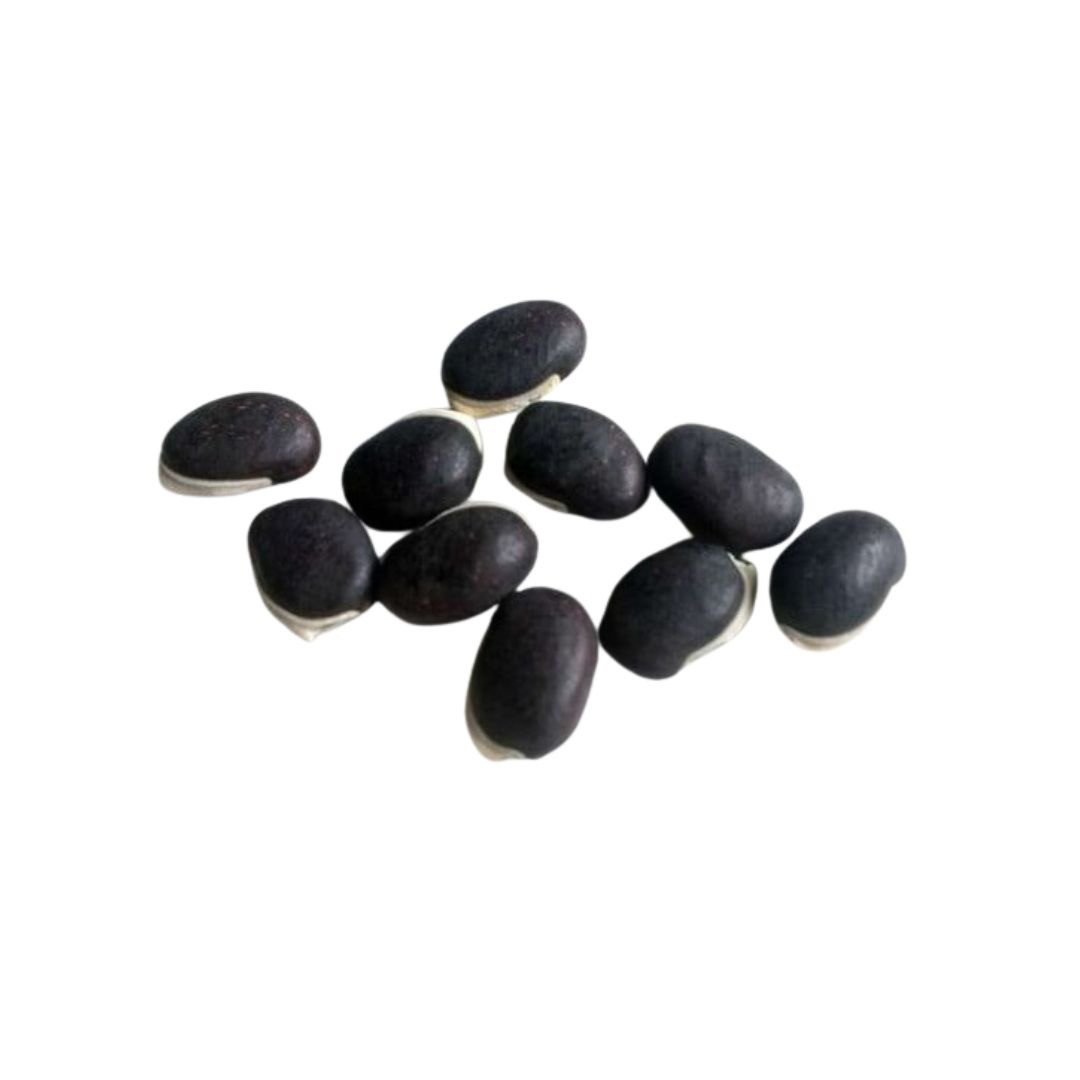Bean (Hyacinth bean / Lablab-bean)

Bean (Hyacinth bean / Lablab-bean)
Lablab purpureus
Plant family
Legumes (Fabaceae)
Also known as
Bonavist Bean, Bonavist Pea, Dolichos Bean, Seim Bean, Sem Bean, Egyptian Kidney Bean, Indian Bean, Bataw, Australian Pea
Season Overview
Propagating
Planting
Harvest
J
F
M
A
M
J
J
A
S
O
N
D
Details
Light requirement
Sunny
Water requirement
Moist
Soil
Medium (loamy)
Nutrient requirement
Low
Plant distance
45 cm
Row spacing
110 cm
Seeding depth
3 cm
Instructions
Description
The helmet bean (Lablab purpureus) is also called Indian, Egyptian, hyacinth or pheasant bean and belongs to the legume family (Fabaceae). It is not frost resistant. Flowering time is from June. The flowers are red-purple. Seeds can be plain, marbled or spotted. In addition to its use as a useful plant, is also used as a ground cover, ornamental plant, and for greening. Can also be planted as a privacy screen. The dark, purple-purple fruits grow between 8-20 cm long.
Origin:
Africa and possibly India
Growing tips
Sensitive to frost, sow outdoors only after the last frosts. Requires sunny, warm place. Grows up to 4 m tall. Climbing plant, needs climbing help. Also grows in the shade. Water well on hot days. Can be pre-pulled from the end of March at 18-25°C. Germination after about 2 weeks. Do not eat beans raw!
Companion Plants
Aubergine / Eggplant
Broccoli
Carrots
Cauliflower
Celery (Celeriac / Celery root)
Celery (Celery)
Celery (Leaf celery / Chinese celery)
Common marigold
Corn / Maize
Cucumber (Melothria)
Cucumber / Gherkin
Horseradish
Oil radish / Fodder radish
Ornamental pumpkin
Pumpkin / Squash
Radish
Radishes
Savory
Sponge gourd / Egyptian cucumber / Vietnamese luffa
Strawberry
Antagonistic Plants
Diseases
No diseases
Pests
No pests